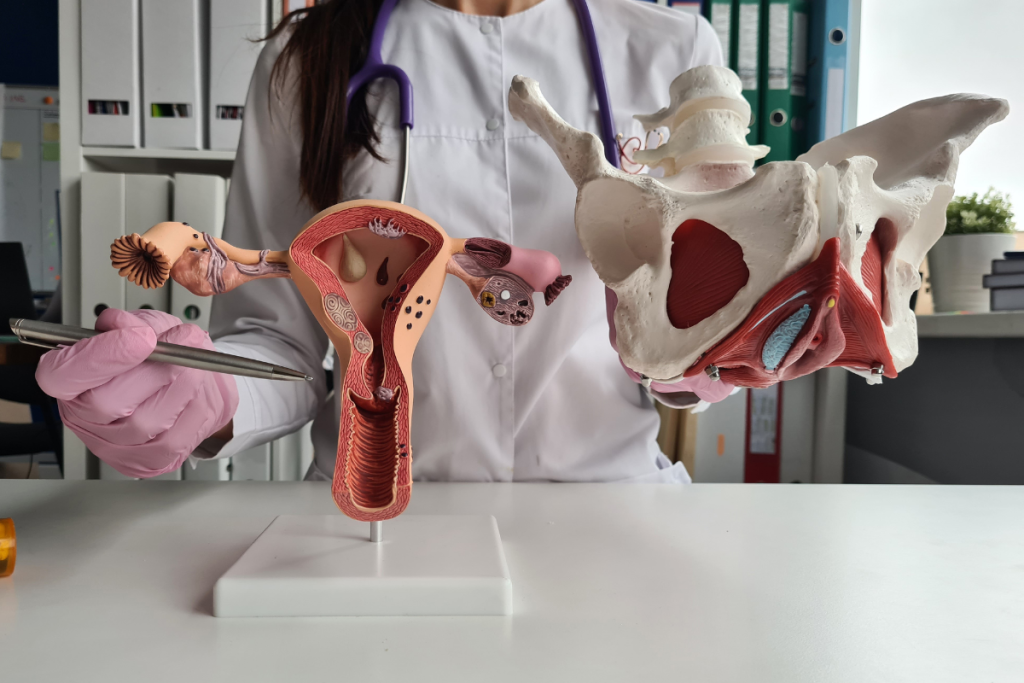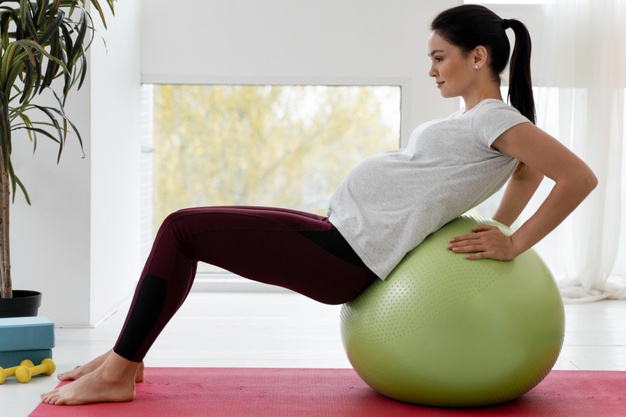Premenstrual syndrome (PMS) is a cluster of physical and emotional symptoms that women may experience before their periods begin. It affects almost half of women of childbearing age, and in one in five it significantly affects their quality of life. What are the symptoms of premenstrual syndrome? What tests are worth carrying out?
What is premenstrual syndrome?
Premenstrual syndrome, is a well-known phenomenon for women that manifests itself with a variety of both physical and psychological symptoms. It occurs before menstruation. These symptoms usually resolve spontaneously within a few days of the start of the menstrual cycle. According to research studies, PMS affects as many as 47.5% women of reproductive age, with 20% of them having symptoms so disruptive that they significantly impair quality of life.
Symptoms of premenstrual syndrome include a variety of complaints such as appetite disturbances (including both decreased and increased appetite), physical complaints such as soreness and swelling of the breasts, headaches (including migraines), back and lower abdominal pain, weight gain, swollen legs and bowel problems. In addition to these, there are also mental symptoms such as irritability, tearfulness, lowered mood, anxiety, mood changes, impaired concentration and memory. Some other complaints include feelings of fatigue, excessive sleepiness or insomnia and an increase or decrease in libido.
The characteristic symptoms of premenstrual syndrome usually appear about 7 days before the onset of menstrual bleeding. They reach their apogee about 2 days before the start of menstruation. The duration, on the other hand, can vary, lasting from a few days up to 2 weeks.

Premenstrual syndrome - causes
We do not know the specific causes of premenstrual syndrome. Analysing scientific studies, it can be suspected that PMS may be related to changes in hormone levels in women during the menstrual cycle. This is particularly true for oestrogen and progesterone.
- A decrease in oestrogen levels can stimulate the hypothalamus to secrete norepinephrine, leading to lower levels of serotonin (known as the 'happy hormone'), acetylcholine and dopamine in the central nervous system. This mechanism results in the symptoms of premenstrual syndrome. Such as feelings of fatigue, insomnia and lowered mood.
- Increased progesterone levels can affect the secretion of serotonin, catecholamines and gamma-aminobutyric acid (GABA) in the brain, leading to the appearance of psychiatric symptoms.
- It has been suggested that the occurrence of PMS symptoms may be related to genetic factors, especially if the syndrome affects other women in the family. In addition, elevated prolactin levels, impaired glucose metabolism, insulin resistance and nutritional deficiencies may also play a significant role.
- Our greatest enemy, stress, can lead to over-stimulation of the sympathetic nervous system, which in turn increases uterine contractions. It causes more pain in women exposed to constant stress.
What tests should you perform?
Wondering what hormone tests are for women with PMS? Are you plagued by premenstrual syndrome symptoms? Check your oestradiol, FSH, TSH, prolactin and cortisol levels! This will enable your specialist to rule out possibly other causes of the symptoms accompanying you. Such as hypothyroidism, Cushing's syndrome or hyperprolactinaemia. It is worth consulting a gynaecologist, especially if your complaints are accompanied by additional problems with your menstrual cycle. An examination by the doctor, including ultrasonography of the reproductive organs, will help identify possible causes of the complaints, such as polycystic ovary syndrome or endometriosis.

Premenstrual syndrome - how to relieve symptoms?
The treatment of the condition is based on the cooperation of several specialists, including not only a gynaecologist, but also an endocrinologist, a psychiatrist and a general practitioner.
One of the more effective therapeutic methods is lifestyle modification. This includes regular physical activity. Aerobic workouts such as jogging, walking or cycling are particularly recommended. Do exercise for at least 30 minutes every day, you will significantly alleviate your symptoms. In addition, supplement with vitamin B6, vitamin D and magnesium. Keep your diet healthy and balanced and if you are experiencing bloating during PMS, avoid fried and hard to digest foods such as onions, garlic and legumes so as not to aggravate the discomfort. Also remember to keep your body well hydrated and get enough fibre in your diet. This will help you avoid constipation and keep your stomach flat. Cigarette smoking, alcohol consumption and excessive coffee drinking should definitely be excluded from the considered items of your diet.
Have you heard of cognitive behavioural therapy? If the above methods prove ineffective, it is worth starting pharmacotherapy. Most commonly, this includes binary birth control pills with low doses of selective serotonin reuptake inhibitors (SSRIs). SSRIs are taken continuously or only during the second phase of the menstrual cycle. If necessary, the doctor may increase the SSRI dose. Unfortunately, discontinuation of therapy results in a recurrence of PMS symptoms. In some cases, women opt to have the uterus removed along with the ovaries, although this is rarely used. The symptoms of premenstrual syndrome resolve spontaneously after menopause.

PMS and natural techniques
Urogynaecological physiotherapy, acupuncture and manual therapy are effective methods that can provide relief from the bothersome symptoms of premenstrual syndrome (PMS). Manual methods are completely safe and involve the application of mechanical stimuli on the patient's body. The physiotherapist performs a series of movements that aim to relax and strengthen the muscle tissue in the area of the reproductive organs. These techniques show a positive effect on the woman's body, accelerating tissue regeneration, increasing tissue elasticity and relieving pain.
In urogynaecological physiotherapy, naturopathic methods are used as complementary manual treatments. They are based on natural treatments that have a beneficial effect on the female body. Properly selected urogynaecological physiotherapy can influence both the causes and effects of various ailments by relaxing muscles and improving the functioning of internal organs.




